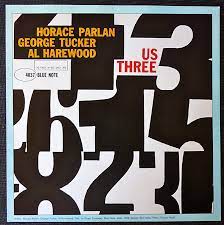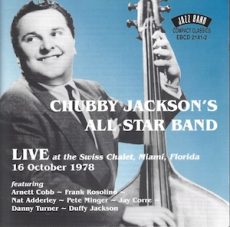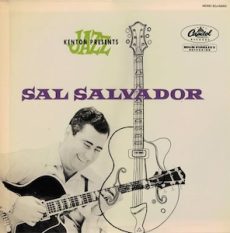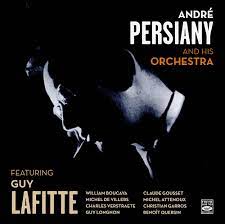
Daily Dose Of Jazz…
George Andrew Tucker was born on December 10, 1927 in Palatka, Florida. He studied bass at the New York Conservatory of Modern Music in the late 1940s. Early in his career, he played with Earl Bostic, John Coltrane, and Jackie McLean. He worked in the house bands of several lauded New York jazz venues and played and recorded with Eric Dolphy, Clifford Jordan, Horace Parlan, Booker Ervin, Jerome Richardson, and Junior Mance during this time.
In 1958, he recorded with Melba Liston on her jazz classic Melba Liston and Her ‘Bones. 1960–61 saw him recording with Stanley Turrentine, Horace Parlan, Ervin, Dexter Gordon, and Shirley Scott. Over the next two years he toured and recorded with the trio of Dave Lambert, John Hendricks and Yolande Bavan. Near the end of his life Tucker recorded with Coleman Hawkins and Jaki Byard.
He recorded at total of fifty-eight albums as a sideman with Ted Curson, Walt Dickerson, Lou Donaldson, Booker Ervin, Curtis Fuller, Bennie Green, Slide Hampton, John Handy, Willis Jackson, Etta Jones, Gildo Mahones, Charles McPherson, Jackie McLean, Oliver Nelson, Dave Pike, Pony Poindexter, Sonny Red, Freddie Redd, Zoot Sims, Johnny “Hammond” Smith, Buddy Tate, Lucky Thompson, Jimmy Witherspoon and Jimmy Woods.
Double-bassist George Tucker transitioned from a cerebral hemorrhage while performing with guitarist Kenny Burrell on October 10, 1965 in New York City.
More Posts: bass,history,instrumental,jazz,music

Daily Dose Of Jazz…
Jay Corre was born on Nov 30, 1924 and grew up in Atlantic City, New Jersey. His interest in music began at five years old, when he started to experiment with various instruments, including the harmonica, violin and clarinet. He picked up the saxophone at age 14 and showed a natural ability for this instrument.
By the time he was sixteen he was playing dates at various clubs that made the shore area a virtual hot bed of fine jazz entertainment. Completing his music studies at the Atlantic City High School he played with the Alex Bartha Orchestra on the Steel Pier. After a stint in the US Navy Band, his discharge favored the opportunity to join the Raymond Scott Orchestra, featuring Dorothy Collins.
He joined the Buddy Rich Big Band before performing with Harry James, Benny Goodman, Dizzy Gillespie, Ella Fitzgerald, The Duke Ellington Band under Mercer Ellington, Ella Fitzgerald, Oscar Peterson, Frank Sinatra, Mel Torme, Tony Bennett, Sammy Davis Jr. and many more.
Tenor saxophonist, composer, arranger and jazz educator Jay Corre, whose influences were Coleman Hawkins, Lester Young and Charlie Parker, transitioned on Oct 26, 2014 in Stuart, Florida.
More Posts: arranger,composer,educator,history,instrumental,jazz,music,saxophone

Daily Dose Of Jazz…
Bobby Donaldson was born Robert Stanley Donaldson on November 29, 1922 in Boston, Massachusetts. Early in his career he played with the Boston Symphony. After playing locally in the early 1940s, he played with Russell Procope while serving in the Army in New York City.
In 1946–47 Bobby worked with Cat Anderson. Following this stint he played with Edmond Hall, Andy Kirk, Lucky Millinder, Buck Clayton, Red Norvo, and Sy Oliver/Louis Armstrong.
A prolific session musician for much of the 1950s and 1960s, he played with Helen Merrill, Ruby Braff, Mel Powell, Benny Goodman, Count Basie, Bobby Jaspar, Herbie Mann, André Hodeir, Kenny Burrell, Lonnie Johnson, Frank Wess, Willis Jackson, and Johnny Hodges.
Drummer Bobby Donaldson, who played both in the jazz, Dixieland and R&B idioms, transitioned in 1971.
More Posts: bandleader,drums,history,instrumental,jazz,music

Daily Dose Of Jazz…
Sal Salvador was born Silvio Smiraglia on November 21, 1925 in Monson, Massachusetts and began his professional career in New York City, New York. He eventually moved to Stamford, Connecticut.
In addition to recordings with Stan Kenton and with his own groups, Salvador can be heard in the film Blackboard Jungle, during a scene in a bar where a recording on which he is featured is played on the jukebox. He is also featured playing with Sonny Stitt in the film, Jazz on a Summer’s Day, at the Newport Jazz Festival.
He taught guitar at the University of Bridgeport in Bridgeport, Connecticut as well as at Western Connecticut State University in Danbury, Connecticut. He wrote several instruction books for beginning to advanced guitarists.
Guitarist and educator Sal Salvador transitioned on September 22, 1999 following a fight with cancer at the age of 73.
More Posts: bandleader,guitar,history,instrumental,jazz,music

Daily Dose Of Jazz…
André Persiany was born on November 19, 1927 in Paris, France. His father taught him violin and piano as a child, and by 1945, he had formed his own ensemble. He was a member of the Be Bop Minstrels with Hubert and Raymond Fol in 1947, then played with Michel Attenoux, Eddie Bernard, Bill Coleman, Buck Clayton, Raymond Fonsèque, Lionel Hampton, Guy Lafitte, Mezz Mezzrow, and Tony Proteau.
Relocating to New York City in the mid-1950s, saw him playing at Birdland and working extensively with Jonah Jones. In 1969 he returned to Paris and held a residency as the pianist at Le Furstenberg from 1970 to 1988. His associations in the 1970s included Cat Anderson, Milt Buckner, Eddie Chamblee, Arnett Cobb, Al Grey, Budd Johnson, and Charlie Shavers.
Pianist André Persiany, whose son Stéphane became a double-bassist, transitioned on January 2, 2004 in Paris.
More Posts: bandleader,history,instrumental,jazz,music,piano



